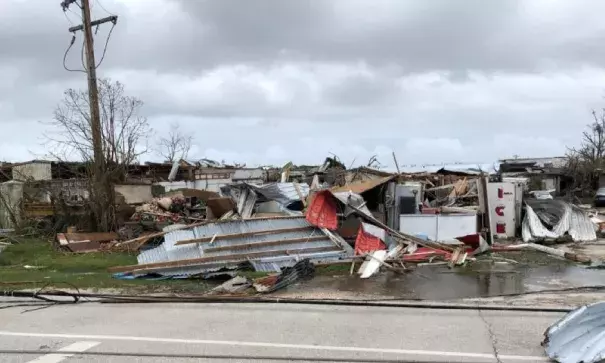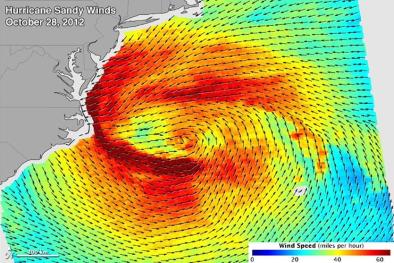Extreme Category 5 typhoon, the worst U.S. storm since 1935, leaves Northern Mariana Islands devastated

Tied for the strongest storm anywhere in the world this year, Yutu packed sustained winds of 180 mph, and its gigantic eye enveloped much of the island of Saipan and all of Tinian, leaving the Pacific islands “mangled,” as one local official described it to The Washington Post.
...
According to figures released by the Weather Underground, Yutu was tied for fifth place when it comes to the highest wind speeds of any storm on record at the time of striking land. Only a few storms, such as 2013′s Super Typhoon Haiyan (which struck the Philippines), have been stronger, and even then, not by much. For the United States, just one storm — the 1935 Labor Day Hurricane that hit the Florida Keys — is believed to have been stronger.
The Northern Mariana Islands are another U.S. territory to have been pummeled by a strong hurricane in the past two years. The U.S. Virgin Islands and Puerto Rico suffered calamitous strikes in the 2017 hurricane season, and Guam was recently struck by Typhoon Mangkhut.
Overall, the escalating impacts on U.S. island territories in the Pacific Ocean and Caribbean Sea underscore that as seas rise and storms worsen in the face of climate change, small islands face some of the most extreme risks on Earth.
...
While the Mariana Archipelago consists of 15 islands, roughly 90 percent of the territory’s residents live on Saipan, which was severely affected by Yutu. Some six percent live on the island of Tinian, which was struck most directly.
The extreme strike occurred with little warning, as the storm strengthened from Category 1 to Category 5 in just a day’s time before landfall. The maximum sustained wind speed increased by 80 mph over that time, resulting in a storm with gusts exceeding 200 mph.
Scientists have recently suggested that such dangerous “rapid intensification” events, which also happened with hurricanes Michael and Florence, may become more common as the planet warms and the oceans heat up, providing additional fuel for storms.
Related Content



